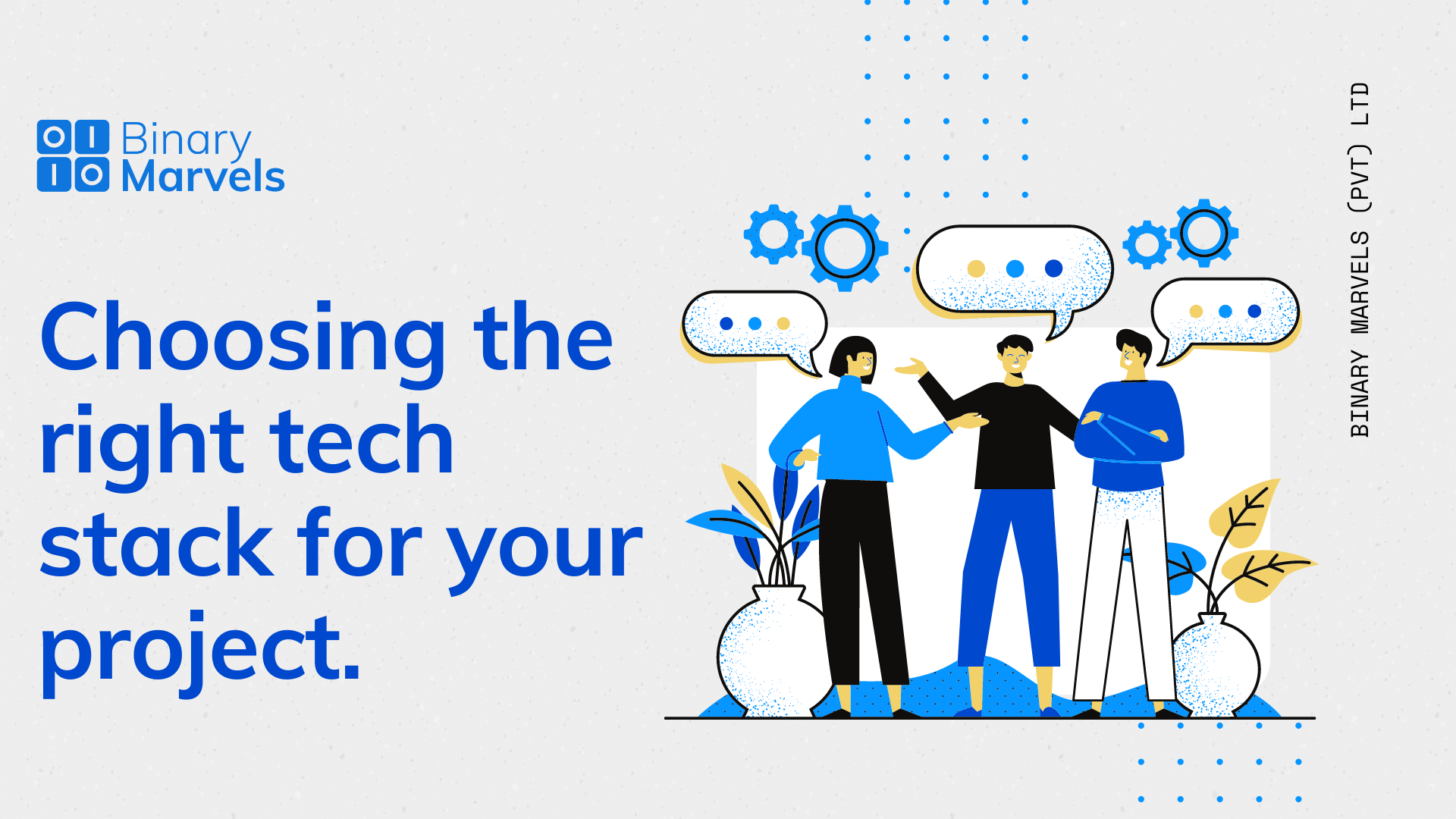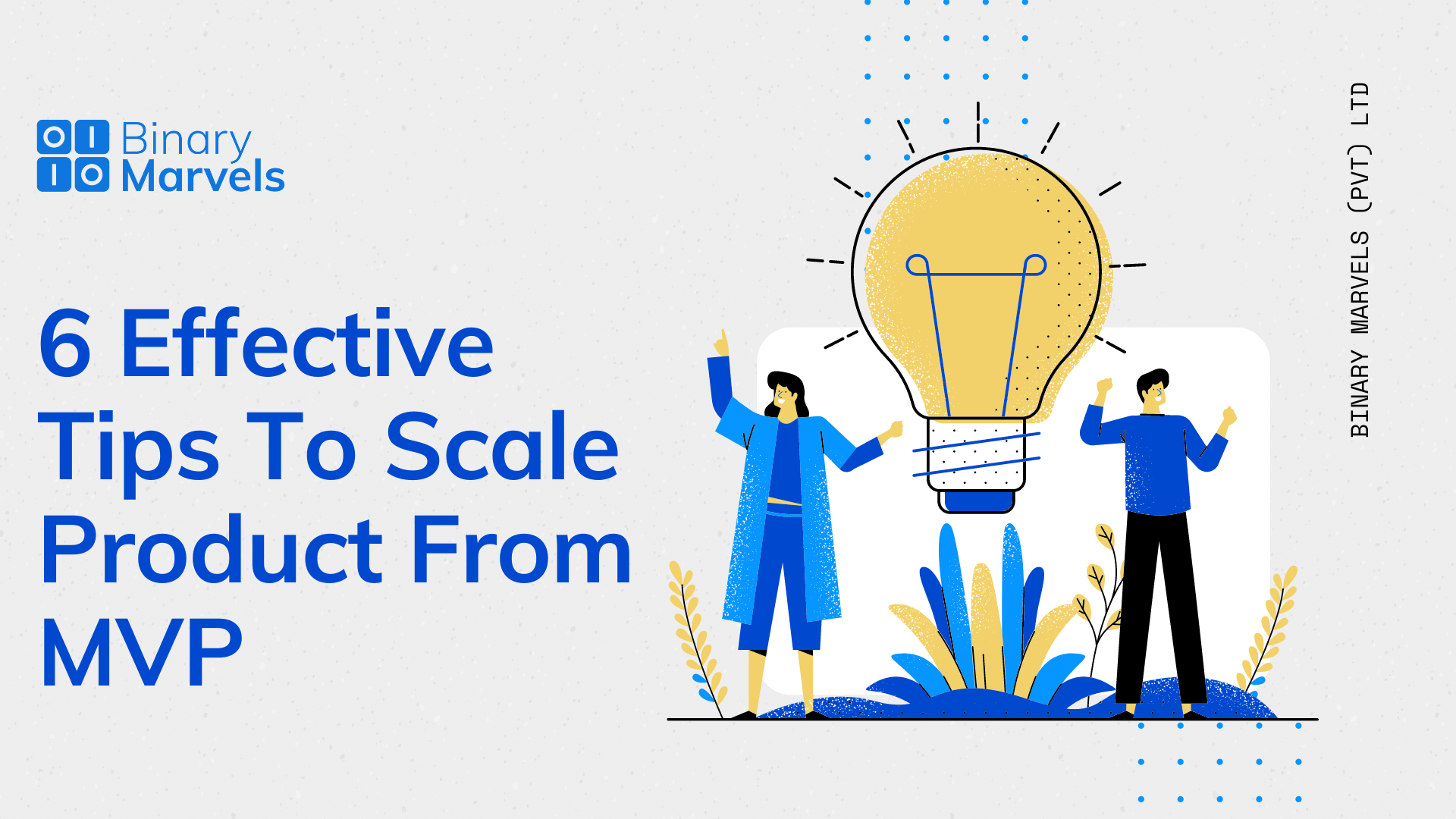
What is a tech stack? What is its significance to a project? And what should a not tech-savvy project owner know about the technologies used?
The tech stack is to IT projects the same way building materials are to a house. It is the list of programming languages, tools, and frameworks that software developers combine for the creation of web and mobile applications.
The term “Tech Stack” is used because when developing an application, several layers are built over each other. The layers involve the use of different programming codes, components, and hardware modules, hence forming a stack of various technologies.
This article sheds light on various tech stack types, what they are used for, and the factors that dictate the best choice.
Structure of a Tech Stack
The structure of a tech stack consists of two basic parts called the client-side and server-side, also referred to as frontend and backend.
The Frontend Tech Stack
The frontend is the user’s side, this is the interface that enables the user to interact with the program. Its primary purpose is the provision of access, convenience, a pleasurable user experience, a call to actions and events.
There is a lengthy list of technologies that can be employed for both mobile and web frontend development. In general, they all relate to the combinational use of HTML, CSS, JavaScript, and other technologies directly or indirectly. Hence, we will focus only on the main ones.
For Web
HyperText Markup Language (HTML) is used for building and placing content. All the positioning and order of page contents are done in this language.
Cascading Style Sheets (CSS) are for the objectification and representation of content materials. Mostly it involves the application of fonts, colors, layout characteristics, background contents, and so on.
JavaScript is also a role player. Its popular use is as a scripting language in browsers to enable interactivity in web pages. Today, there are numerous JavaScript libraries like jQuery, Bootstrap, and Slick fitted into frameworks such as Angular, Vue.js, and React that allow adding powerful functionality in your user interface.
For Mobile
Mobile frontend technologies can be categorized as native and hybrid. Hybrid development is based on the use of cross-platform web technologies such as HTML, CSS, and JavaScript.
In its turn, native development is based on the use of native or cross-platform programming languages such as Java and Kotlin for Android, Objective-C, and Swift for iOS, React Native, Xamarin, and Flutter. The use of a native mobile app development approach is much preferable today as it allows more control and easier hardware access.
The Backend Tech Stack
The backend is comparable to the engine block that propels an application. It ensures the proper functioning of all the features responding to user requests such as access to the database and executing CRUD operations – Create, Read, Update, and Delete.
Backend constituents include programming languages, servers, server-side frameworks, OSs, databases, and APIs. There is also the involvement of business logic, hosting, deployments, and so on. Typical examples are the MERN, MEAN, and LAMP backend stacks.
The majority of sites today are on the MERN stack, which allows it to remain one of the most popular technologies. Anyway, there are plenty of other languages and frameworks to choose from.
Ruby on Rails, .NET, Spring for Java, Django, and Flask for Python, Swift, or Objective-C are the popular frameworks for backend development. They are reliable for implementing regular features such as user authentication, data access, and others; thus preferred by most developers. For example, Ruby and Python are frequently used especially for faster prototyping.
Middleware
Middleware is software that integrates two or more systems, applications, or components for easy communication. Note that middleware is not a developer tool. It functions as a hidden translation layer that connects the backend and frontend parts of an application.
It is a recherché usually written in Java or C# to enable parsing, communication, and management of data between your app and server or database. The role it plays is vital in the distribution process of real-time actions, which is beyond sending requests and responses back and forth to the client and server.
Middleware consists of application servers, web servers, content management systems, and other related tools that support the development and delivery of applications.
Factors for Choosing a Tech Stack
The tech stack is consequential because it’s what you use for creating software programs. Thus, don’t underestimate the essence of research and analysis to select the right set of tools.
A wrong choice of technologies can cause you the loss of money, time, and other valuable resources for your project. A sound business analyst and well-experienced developers are needed to avoid pitfalls when choosing your tech stack.
Here’s the list of necessities to consider when choosing a purposeful tech stack.
Defining the Platform
What are the expectations of the project? This is an important pointer. Without an understanding of what you expect from the project, choosing a stack is a futile move.
At this point, you should ask yourself who are my target audience. How they will use your app, when, and where. What is the popular active device among them? Is it a mobile phone or a regular computer?
For instance, a web application requires a totally different set of tools and frameworks from a mobile app. Even within mobile applications, the tech stacks you need for Android and iOS development are different.
You should then plan based on your answers, and decide if you need a single or multi-platform solution to choose the best tech stack to use. Keep it in mind that if you are making an MVP first. It is better to make it on a prominent platform popular among your target users to save software development costs and get user feedback promptly.
Learn more: The Ultimate Guide To MVP Development
It doesn’t matter if it’s going to be a mobile or web application. MVP is vital to the success of a project and the development process. After defining the platform, consider all functional and non-functional parameters that are essential for the project launch. A set of well-defined requirements for MVP will finger the tools you need to reach your aim and the additional tech stack you may need for the market version.
Defining the Project Type
After you cross the bridge of defining the platform, you still have more analysis to make in choosing your tech stack. You will be considering the project based on its size and complexity, processing strength, and business goals. For example, if your application involves multiprocessing or requires low latency for better responsiveness, then you must consider the relative tech stack that provides such support.
Small Projects
They are usually fast to deliver due to simple requirements and usually can be implemented with less sophisticated technologies like CMS or WordPress in the case of web projects.
Mid-Size Projects
For mid-size projects, there is a higher level of technological commitment. They may call for the use of several combinations of programming languages and tools depending on requirements and platforms. Such projects require technologies that provide more sophisticated and diverse functionalities and integrations.
Complex Projects
If you intend to create a social network, online marketplace, CRM, or order management system, then you are looking at a complex project. The combination of multiple programming languages is inevitable for such. This is just like the case of a mid-size project but with more complex features. You need several functions, integrations, and more sophistication, hence, your tech stack must be of a high level.
Scalability Requirements
The role of a tech stack in the scalability of an application is to make provision for the increase in users and functions. Your developers should make a choice of the tech stack that will make room for new engaging features, user growth, and a seasonal rise in the number of users.
Your provision for scalability must cover horizontal scaling which involves several application servers running at the same time to handle the flow of user traffic, as well as vertical scaling for the inclusion of more programs to process new data types. Scaling horizontally and vertically will protect your application from crashing when the stormy days come.
Technology and Team Expertise
You need to weigh the expertise of your team and use it as a basis to judge your choice of the tech stack, except if you are looking to outsource. Developers usually have the command of some programming languages and tools more than others, so it all boils down to how skillful your team is.
Book FREE consultation with our Experts
You have to be certain your team can successfully follow through with the use of a tech stack, or else, there is no need to use such a stack. To avoid employing an expert to cover up for the technology your team lacks, you can train them.
That is if you have the luxury of time, but if you are pressed by the deadline just outsource the project. Therefore, it is paramount to match the skills and experience of your team and see that it matches the choice of technology. Platforms like clutch can be very handy for picking the right agency in this case.
Also, try to ensure your choice of tech has a big developer community and the availability of reference documents such as it is on Github and StackOverflow. This would help your team not to get stranded on a tool or technology.
Maintenance
You need to consider that your team must be able to maintain the application after it is released. This is the next lane after you have developed your app, and it is related to your choice of tech stack too.
Codebase
Your choice of tech stack should be motivated by software architecture and existing codebase if you want feasible maintenance. Try choosing languages that are effective with short, reusable, and easy-to-maintain codes. Your codebase should be simple and of average length. It helps developers to spend a short interval of time trying to review, debug, and process the codes.
Software Architecture
Software architecture is a key player in enabling the scalability, portability, and reusability of applications. Your choice of tech stack should be guided by your software architecture.
Based on this, you should consider technologies that enable both static and dynamic component configurations. It makes the performance of the application seamless, even when users increase or you add more engaging features.
The Cost Implication of Tech Stack
Money makes the world go round they say. Besides, nothing comes for free. On the contrary, there are several popular open-source IT frameworks and tools that are free.
However, they come with subscription fees if you will need some special or advanced features. You might need to pay for licensing, and there is also the cost of maintenance. The choice of tech stack can lean on all these factors.
Furthermore, some tech stacks demand high salaries for their developers, so you need to consider that too. You might also have to look at the cost of training developers for a particular tech if it is an option. The tug of war is between the overall cost of using a tech stack and the effectiveness of its features.
Some Popular Tech Stacks in 2024
1. MERN Stack
The MERN stack is a well-known and powerful software development stack for creating dynamic web applications. It comprises four technologies: MongoDB, Express.js, React, and Node.js. Each technology contributes significantly to the development of a robust and scalable application.
MongoDB is a document-oriented NoSQL database that offers scalability and flexibility for data storage and retrieval. It stores data in a JSON-like format, making it simple to work with and integrate with other technologies.
Express.js is a Node.js web application framework that is lightweight and flexible, and it is used to create server-side web applications. It provides a simple and intuitive API for creating HTTP servers and handling requests and responses.
React is a popular frontend library for creating dynamic user interfaces. It offers comprehensive tools for creating reusable components, managing state, and handling events. React employs a virtual DOM, allowing quick and efficient UI updates.
Node.js is a server-side JavaScript runtime used to build scalable and high-performance applications. It has an event-driven, non-blocking I/O model that allows it to handle large volumes of requests quickly and efficiently.
MERN stack is an excellent choice for developing modern and dynamic web applications due to combining these four technologies. MERN stack applications are highly scalable, performant, and easy to maintain. Additionally, a large and active community of developers and users contribute to the stack’s growth and development, making it a reliable and future-proof choice for web development.
Example of great applications created with MERN: Netflix
2. LAMP Stack
The LAMP stack is a popular tech stack for software development. It consists of four main components: Linux, Apache, MySQL, and PHP.
Linux is an open-source operating system that provides a stable and secure platform for software development. Apache is a widely used web server that supports various programming languages and is known for its flexibility and scalability. MySQL is a robust and dependable database management system allowing quick and efficient data retrieval. PHP is a server-side scripting language that is widely used for web development.
The LAMP stack is well-known for its simplicity, adaptability, and low cost. LAMP allows developers to create dynamic, interactive web applications that are simple to maintain and scale. It is an excellent choice for web developers who are just starting or working on small to medium-sized projects.
But there may be better options for large-scale projects requiring high scalability and performance. There may be better options for complex projects that necessitate specialized knowledge.
Overall, its ease of use, flexibility, and affordability make it a popular choice among developers around the world.
Example of great applications created with LAMP: Slack
3. ASP.NET Stack
ASP.NET is a popular technology stack for software development that is widely used for building dynamic and robust web applications. It is a server-side web application framework designed to work with the Microsoft .NET platform.
Scalability, performance, and security are all key features of ASP.NET. It provides a comprehensive set of tools and libraries that make it easy for developers to build complex web applications quickly and efficiently. The framework is designed to support many programming languages, including C# and Visual Basic. It seamlessly integrates with other Microsoft technologies such as Azure, SQL Server, and Visual Studio.
ASP.NET offers several advantages over other technology stacks. For example, it performs better than traditional web technologies like PHP and LAMP. It is also more scalable and can handle a high traffic volume without compromising performance. Additionally, ASP.NET offers robust security features, making it a preferred choice for applications requiring high-security levels.
However, ASP.NET can be complex and requires specialized expertise to use effectively. It also has a steeper learning curve compared to other web development frameworks. Furthermore, it is a Microsoft technology, so it may not be the best choice for developers who prefer open-source platforms.
Example of great applications created with ASP.NET: Microsoft
4. MEAN Stack
MEAN stack is another popular technology stack for software development. It is a free and open-source tech stack, and its components include MongoDB, Express.js, AngularJS, and Node.js. This stack is known for its versatility and flexibility, making it an excellent choice for developing dynamic and real-time applications.
MongoDB is a NoSQL database that stores data in the form of documents, and it is highly scalable and easily manageable. Node.js is a server-side JavaScript runtime designed to build scalable and high-performance applications. Express.js is a powerful and lightweight framework for building web applications in Node.js. AngularJS is a client-side JavaScript framework that simplifies the development of single-page applications.
One of the key advantages of the MEAN stack is its ability to use JavaScript on both the client and server sides, which reduces the need for developers to switch between different programming languages. This makes it easier to write, test, and deploy applications and maintain and scale them.
MEAN stack is an excellent choice for developing real-time web applications like chat apps, gaming apps, and collaborative tools. It is also great for building single-page and mobile apps using Ionic and NativeScript.
Example of great applications created with MEAN: YouTube
5. MEVN Stack
The MEVN stack is a well-known technology stack made up of four powerful technologies: MongoDB, Express.js, Vue.js, and Node.js. MEVN is used to build robust and scalable web applications, especially those requiring real-time data streaming and dynamic user interfaces.
MongoDB is a NoSQL database that stores data in a document-based format. It is highly scalable and provides flexible data modeling options. Express.js is a minimalistic and flexible web application framework enabling developers to build robust APIs quickly. Vue.js is a progressive JavaScript framework for creating complex user interfaces. Finally, Node.js is a JavaScript runtime environment that allows developers to write server-side code in JavaScript.
One of the most significant advantages of the MEVN stack is that it enables developers to build web applications using a single language – JavaScript. This means that developers do not have to switch between different programming languages while building other application parts, which can save time and reduce development costs. Additionally, the MEVN stack is highly modular, which makes it easy to add new features and functionalities to the application.
Another advantage of the MEVN stack is its easy deployment and scalability. You can quickly deploy applications built using the MEVN stack on cloud platforms such as AWS, Google Cloud, or Microsoft Azure. These cloud platforms provide a scalable infrastructure that can handle millions of users without compromising performance.
However, the MEVN stack has its challenges. One of the main challenges is that it is relatively new compared to other stacks like LAMP and Ruby on Rails, which means fewer resources and documentation are available online. Additionally, the MEVN stack is unsuitable for building large-scale enterprise applications requiring complex architectures.
Tips For Choosing Your Tech Stack
Choosing the right tech stack for your software development project can be challenging. There are several factors to consider before making the final decision.
Here are some essential tips that you should consider when choosing your technology stack:
1. Define project size, complexity, and functionality: Before selecting a technology stack, you must have a clear understanding of your project’s size, complexity, and functionality. Make sure you choose a stack that meets your project’s requirements. If your project is small and straightforward, you can go for a lightweight stack, while a more significant project may require a more comprehensive and robust stack.
2. Scalability requirements: Scalability is an essential factor when selecting a technology stack. If your project has the potential to grow, you must choose a tech stack that can scale with your project’s growth. Select a stack that can handle high-traffic volumes and large datasets.
3. Technology & Team Expertise: Choosing a technology stack your team is familiar with is crucial. If your team has expertise in a particular technology, consider choosing a software stack that includes that technology. This will save you time and resources in training your team on new technology.
4. Time to market: Time to market is critical to software development. If you need to launch your project quickly, you must choose a tech stack that enables you to develop and deploy your project quickly. Make sure you choose a stack that allows you to build and launch your project quickly.
5. Security requirements: Security is a critical concern in software development. You must choose a tech stack with robust security features to protect your application and its users’ data. Make sure you choose a stack that follows the best security practices and has a secure track record.
6. Maintenance: Maintenance is an essential aspect of software development. You must choose a technology stack that is easy to maintain and has a large community of developers who can help you with any issues. Make sure you choose a stack that is stable and has good documentation.
7. Development cost: The development cost is a crucial factor to consider when choosing a technology stack. Make sure you choose a stack that fits your budget and offers good value for money. Consider the cost of licenses, hosting, and maintenance when choosing your stack.
What Should Be Your Next Step?
After considering all the factors mentioned above, you should clearly know which technology stack best fits your project. Your next step is to start the development process, but before that, there are a few things you should do:
1. Plan the development process: Now that you have chosen the technology stack, it’s time to plan it. Determine the project scope, set timelines and milestones, and allocate resources accordingly.
2. Build the team: Depending on the size and complexity of your project, you may need to hire additional developers or technical experts. Make sure to build a team that has the necessary skills and experience to deliver the project.
3. Set up the development environment: Set up the development environment by installing the necessary software, tools, and libraries. Ensure the environment is configured correctly and all team members can access it.
4. Develop the MVP: Develop the Minimum Viable Product (MVP). This will help you validate the idea and get feedback from users. Once you have a working MVP, you can add more features and functionalities.
5. Test and deploy: Test the application thoroughly to ensure it is bug-free and works as intended. Once satisfied with the results, deploy the application to the production environment.
Final thoughts
Choosing the right tech stack is crucial for the success of your software development project. There are many factors to consider, including project size, complexity, scalability, team expertise, time to market, security requirements, maintenance, and development cost.
In 2023, the software development landscape is changing rapidly, and new technologies are emerging every day. As a software developer, it is essential to stay up-to-date with the latest trends and technologies and choose the best stack for your project.
But remember, choosing the right stack is just the beginning; the real challenge lies in developing a quality application that meets the needs of your users.
So, take your time, research, and choose the best stack that aligns with your project goals and requirements. With the right technology stack and development team, you can build unique software that solves real-world problems and delights your users. Here you can find out how Binary Marvels builds user-centric websites, web, and mobile applications
Binary Marvels will be glad to provide you with consultations and assist you with your software initiatives. We will suggest to you the most appropriate tech stack and project management methodologies that guarantee successful project delivery. Learn more about our software development services and contact us today.









